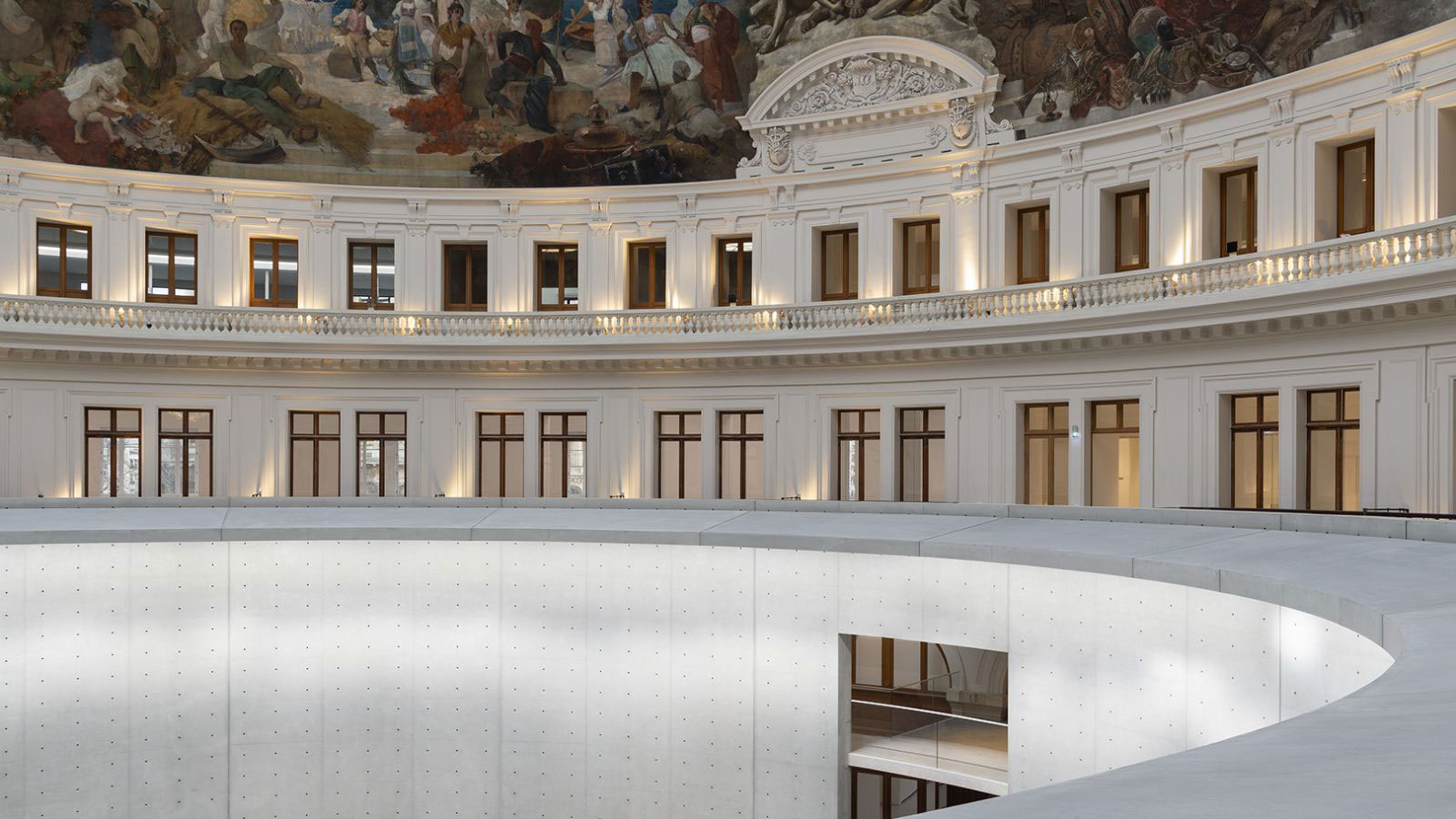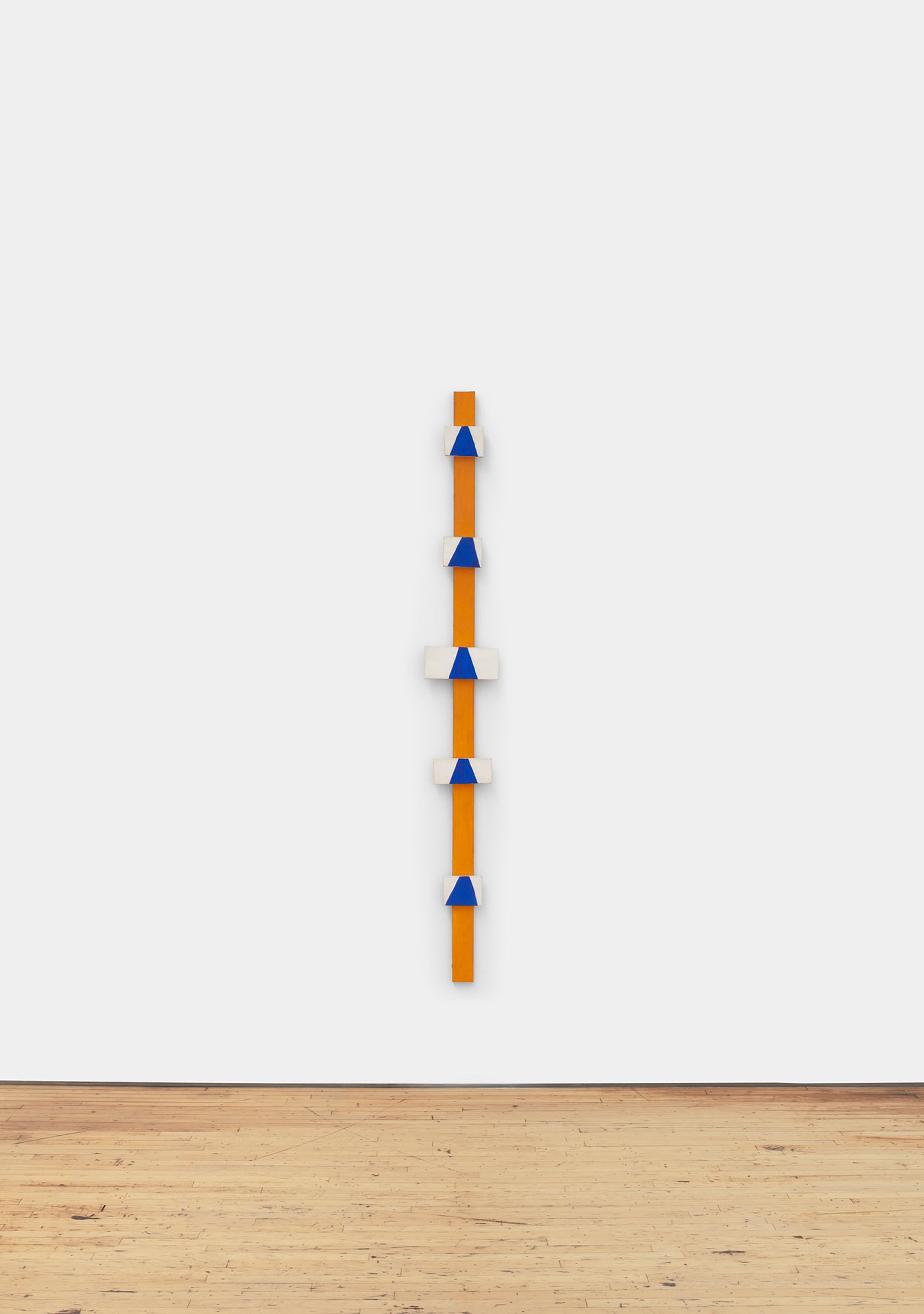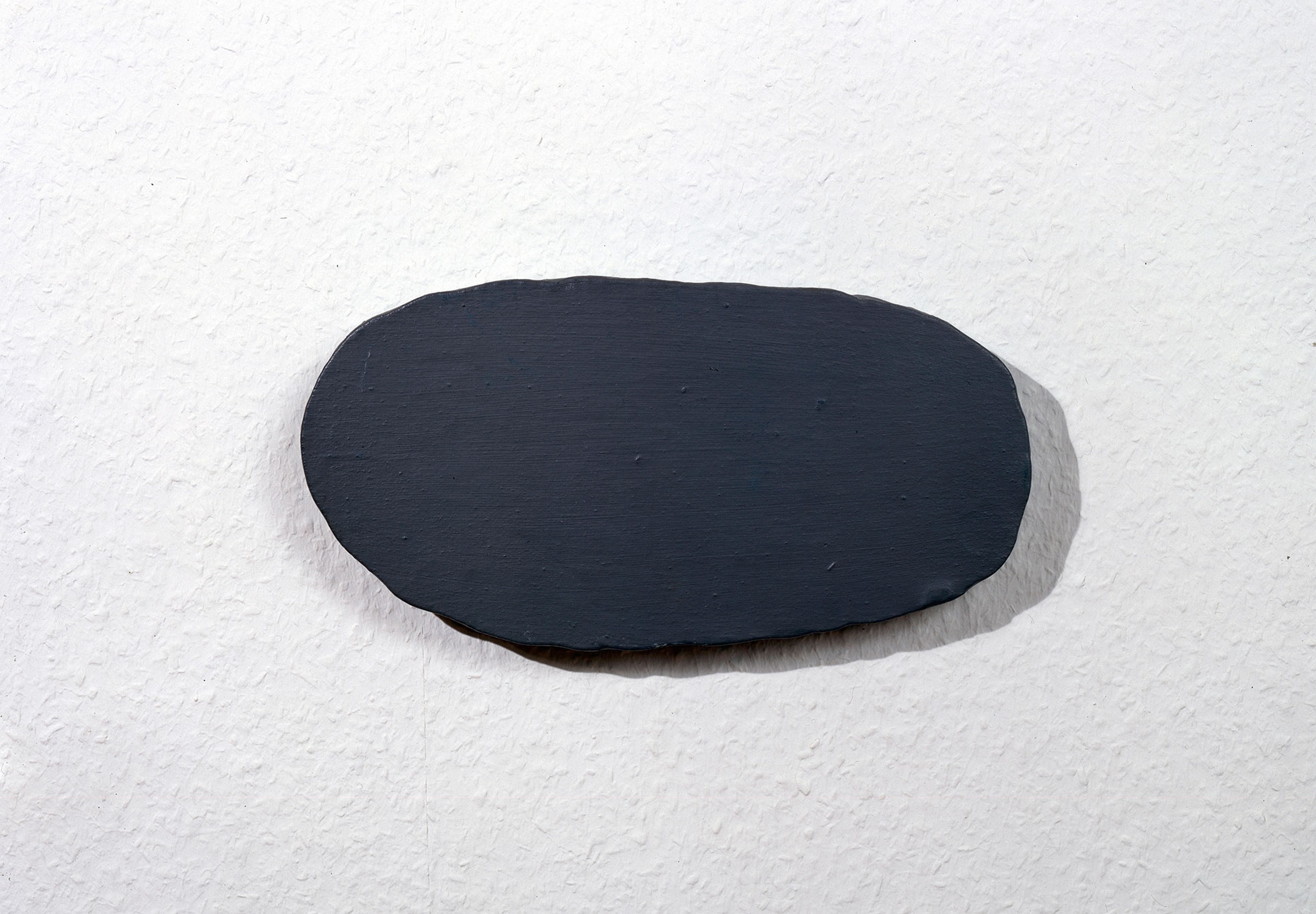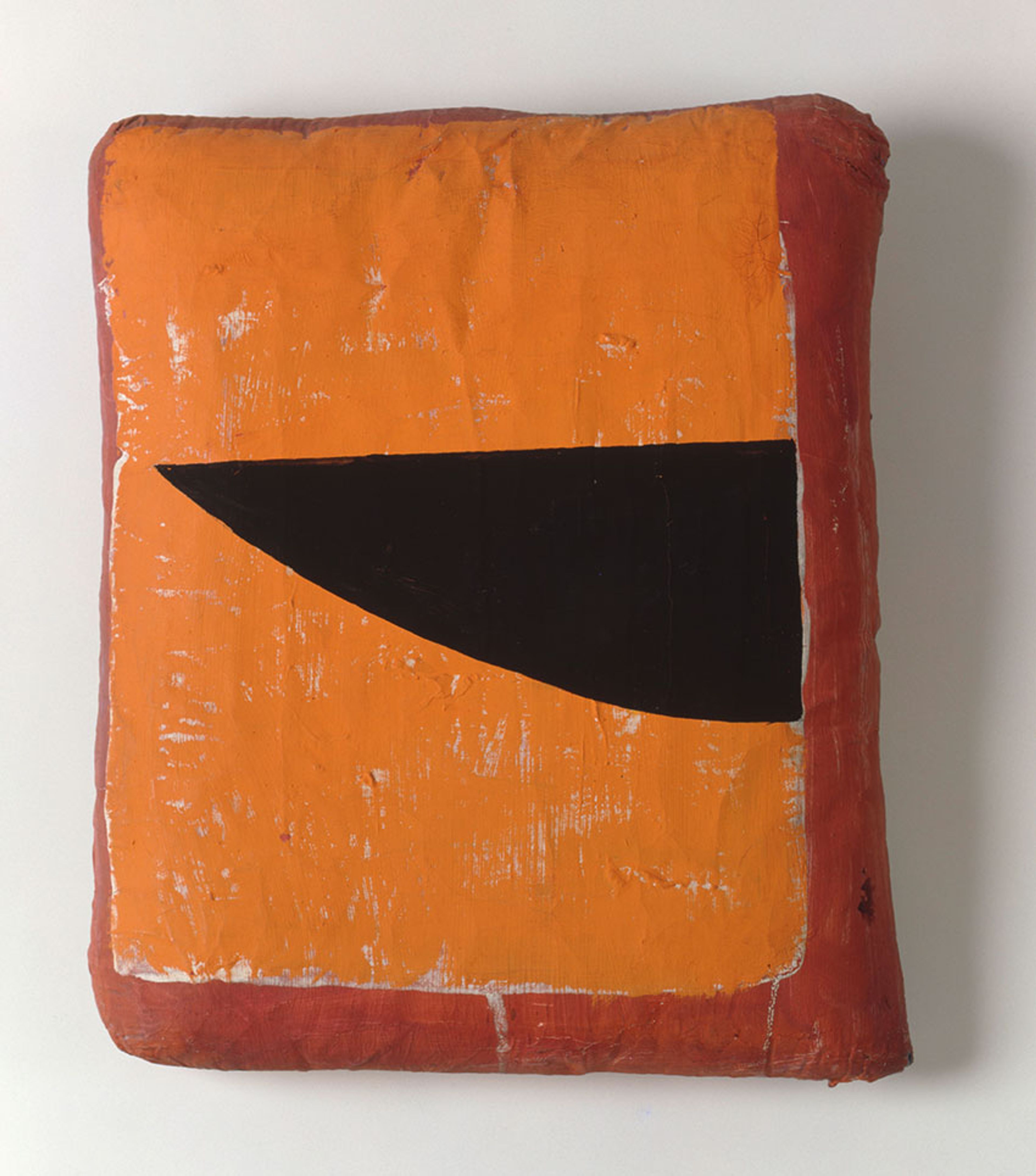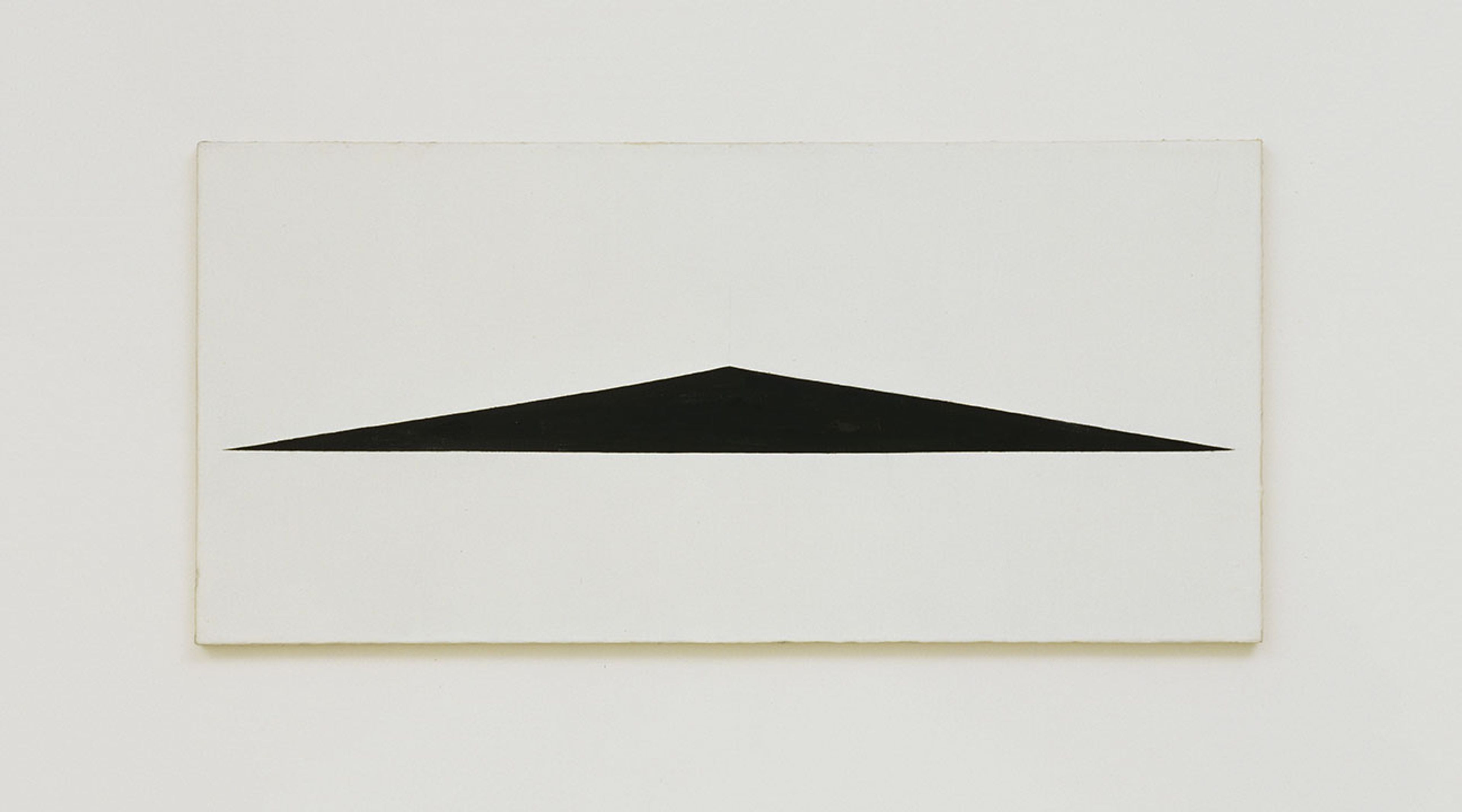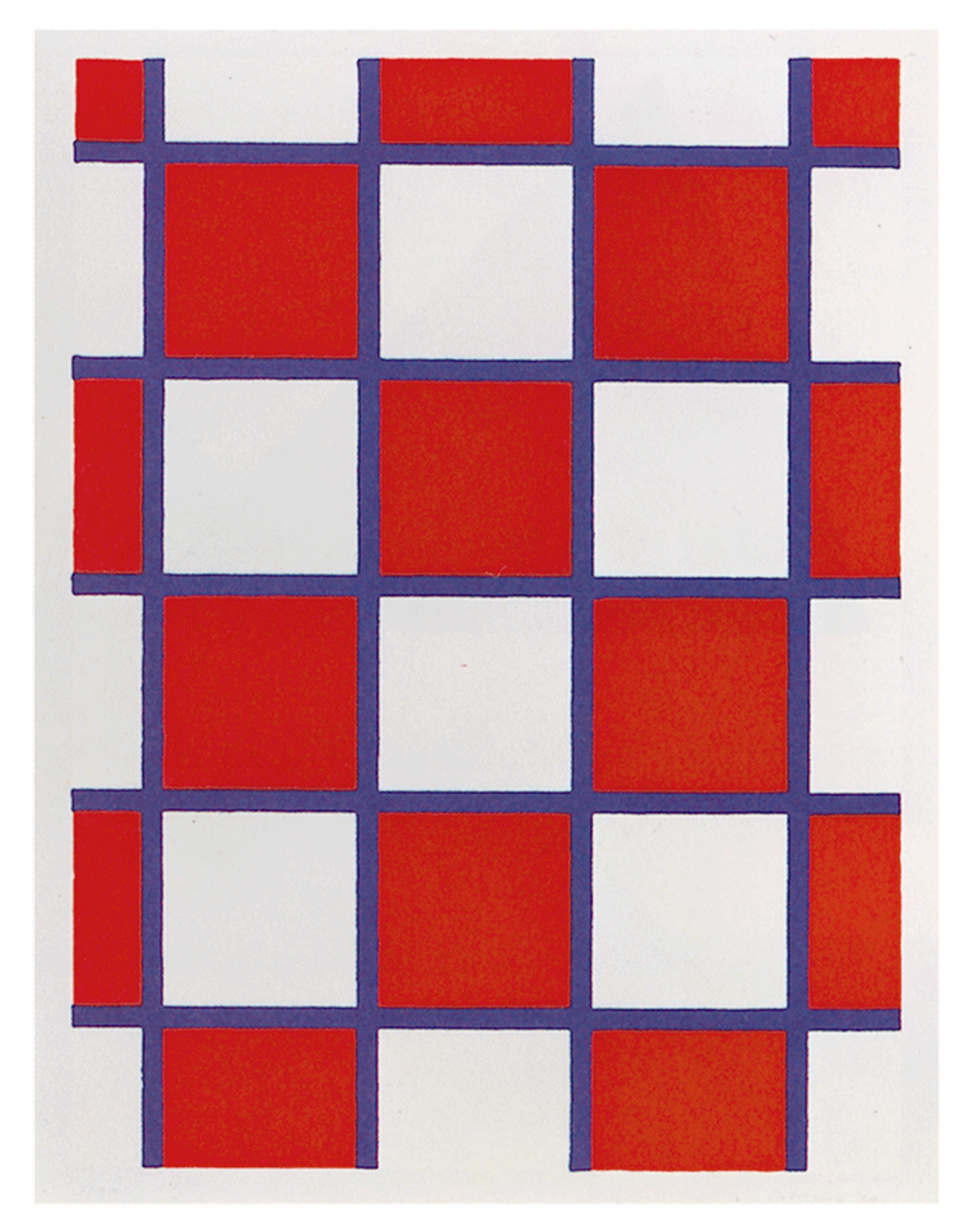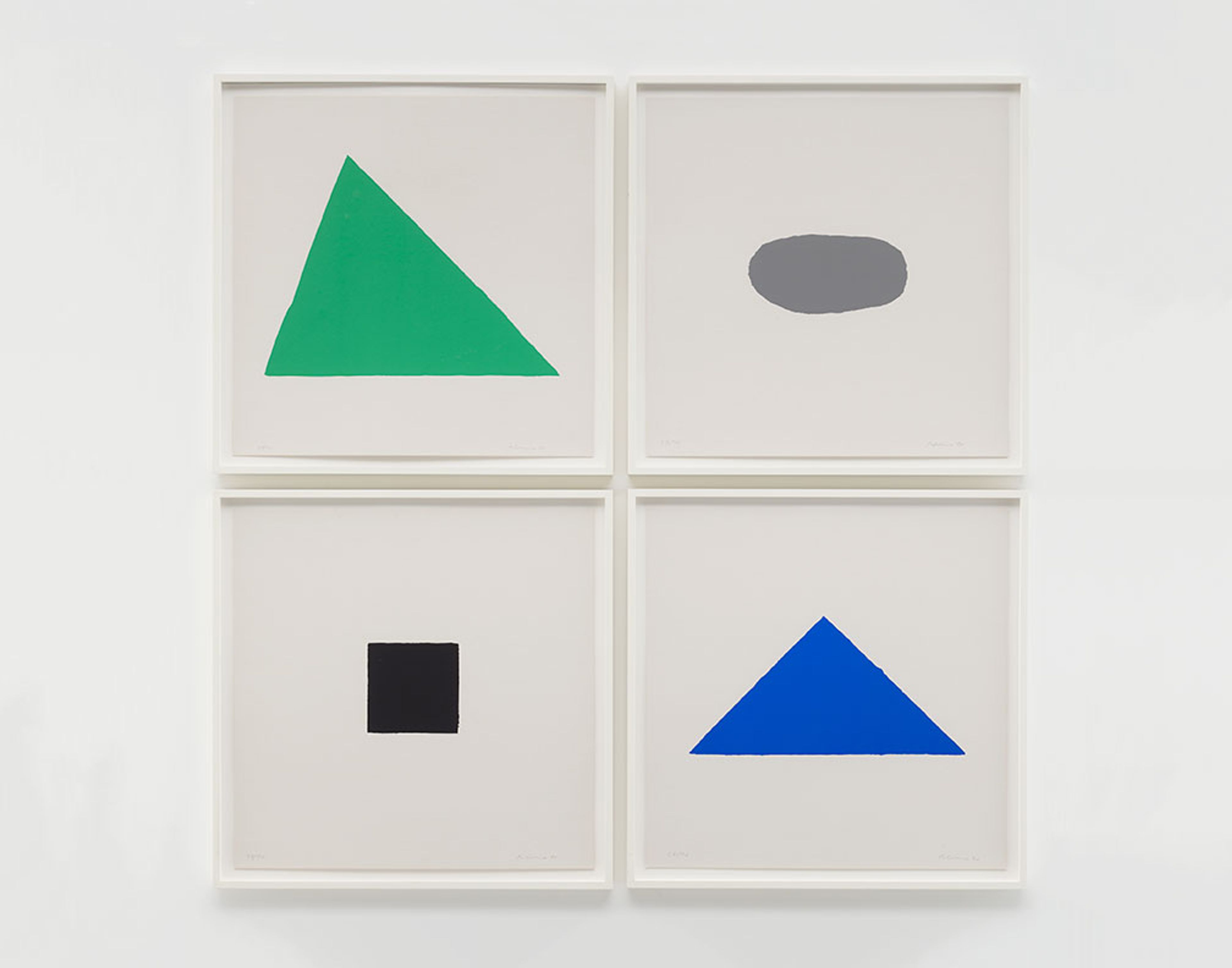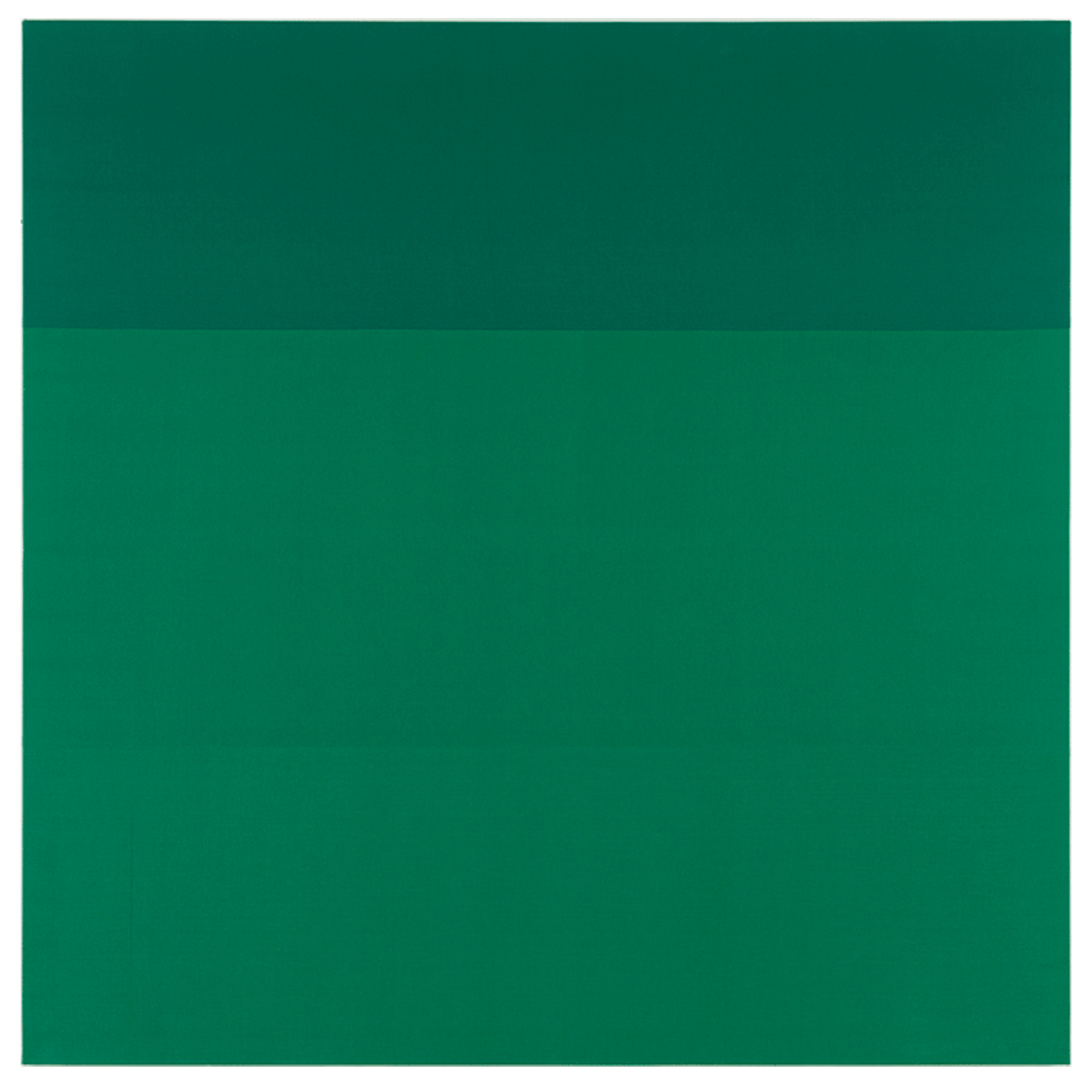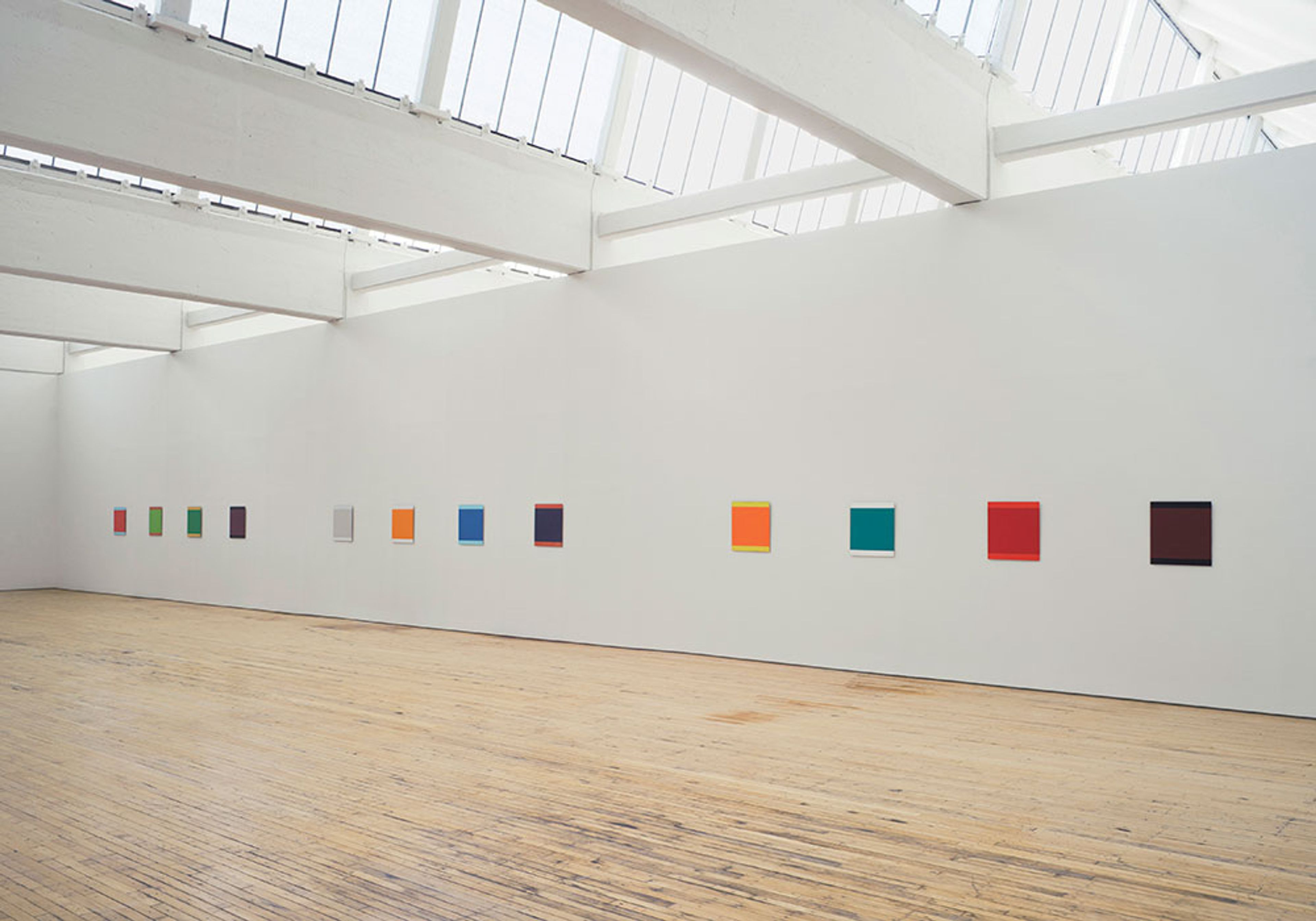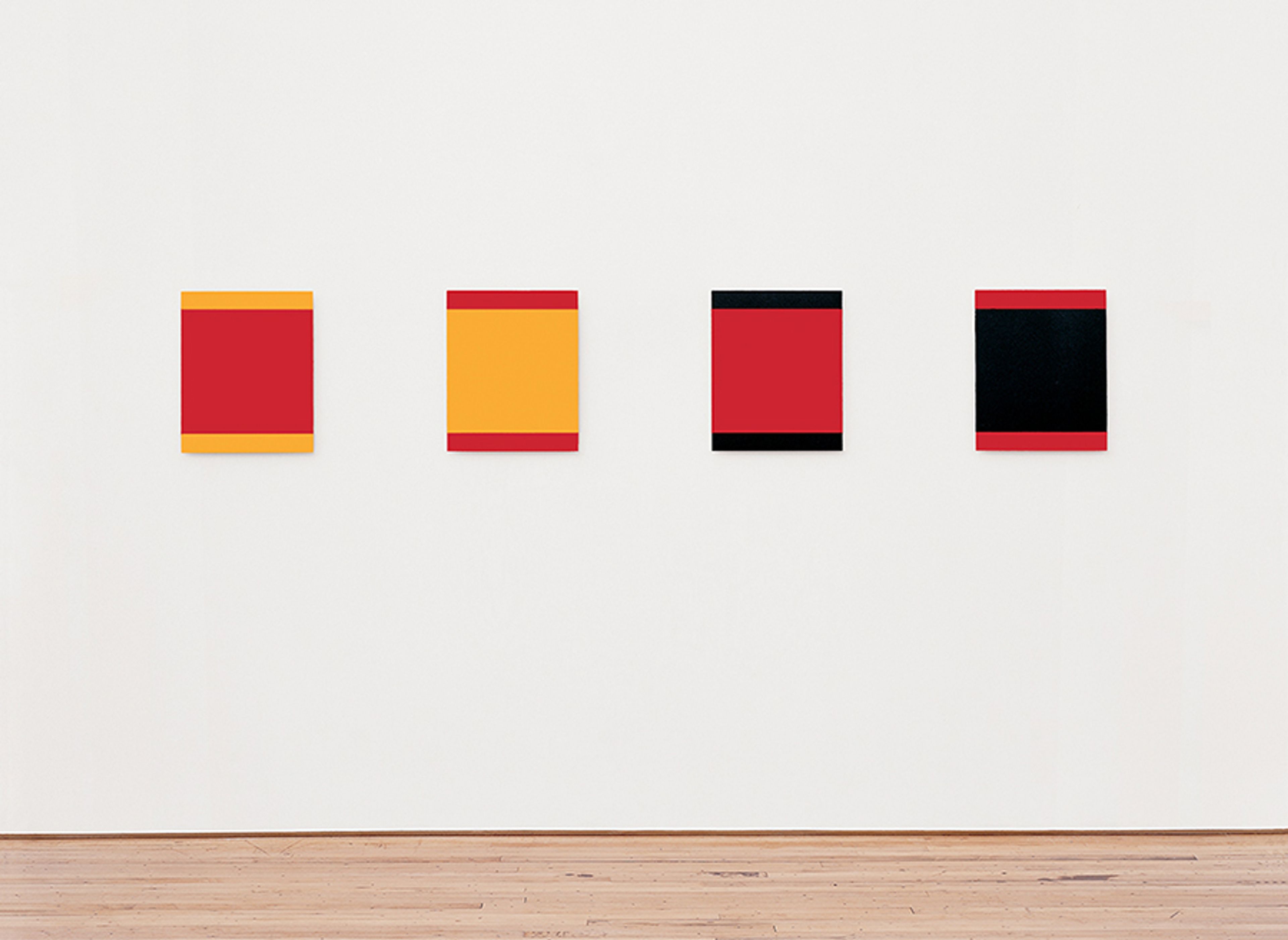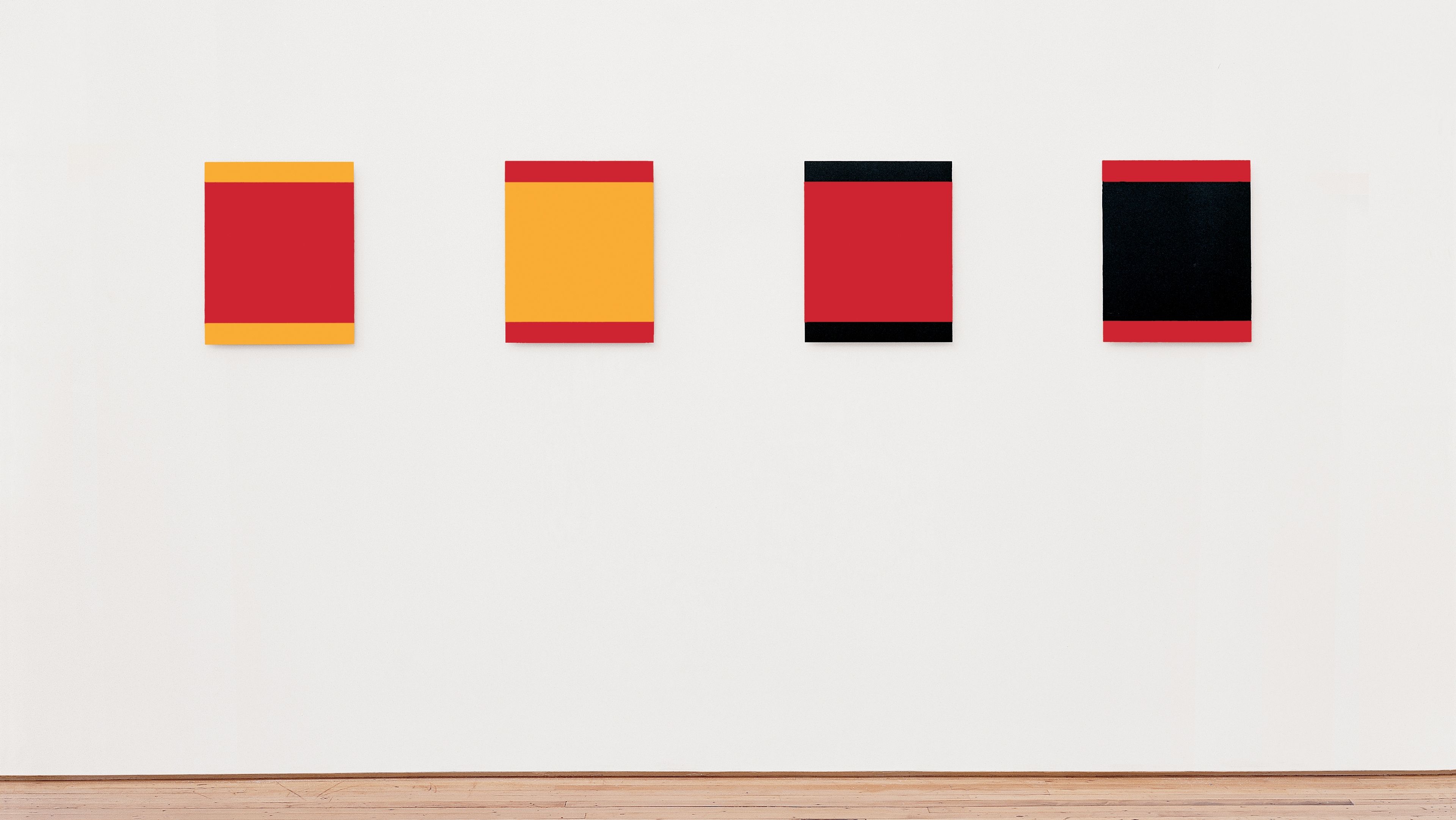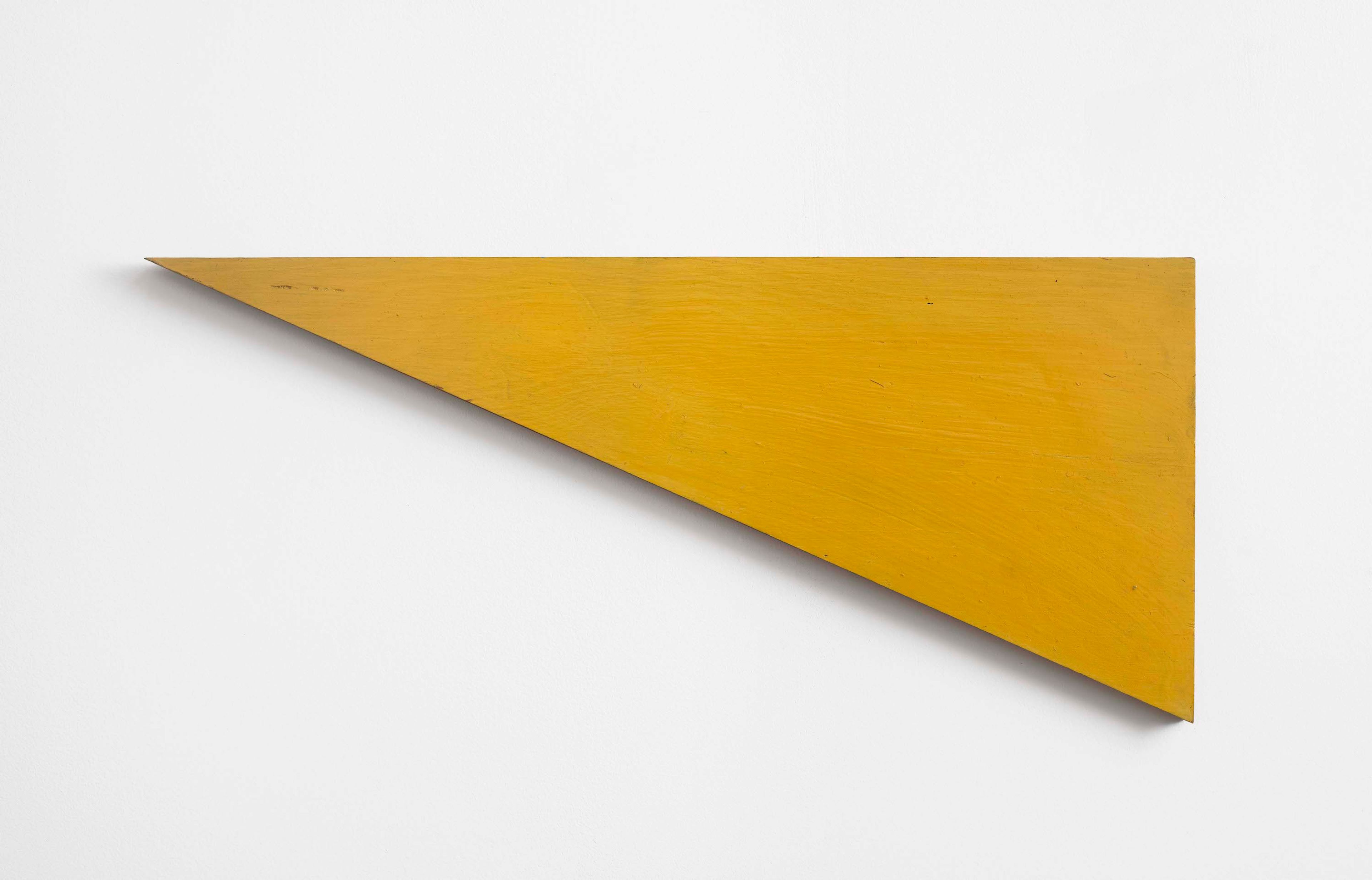Palermo
German artist (Blinky) Palermo’s (1943–1977) diverse body of work defies easy classification. Throughout his brief and influential career, Palermo executed a diverse and rigorous body of paintings, “objects,” installations, wall drawings, and works on paper. His handling of form, color, and composition comprises a complex and experimental investigation of aesthetic concepts and of the semiotic possibilities of art.
Learn MoreSurvey
Exhibitions

Explore Exhibitions
Artist News
Biography
German artist (Blinky) Palermo’s (1943–1977) diverse body of work defies easy classification. Throughout his brief and influential career, Palermo executed a diverse and rigorous body of paintings, “objects,” installations, wall drawings, and works on paper. His handling of form, color, and composition comprises a complex and experimental investigation of aesthetic concepts and of the semiotic possibilities of art.
Palermo was born Peter Schwarze in Leipzig, Germany, and was adopted and raised under the name Peter Heisterkamp. He changed his name to Palermo, taking the pseudonym from the American boxing promoter Blinky Palermo (“Blinky” later became his nickname; Palermo was his chosen artist name). In the 1960s, he studied under Joseph Beuys at the Kunstakademie Düsseldorf. Palermo died in 1977 at the age of 33 while traveling in the Maldives.
Since his first solo exhibition in 1966 at Galerie Friedrich & Dahlem, Munich, Palermo’s work has been included in numerous important exhibitions in Europe and the United States at such institutions as the Von der Heydt-Museum, Wuppertal, Germany (1968); Hamburger Kunstverein (1973); Städtisches Kunstmuseum, Bonn, Germany (1975 and 1994); São Paulo Biennial (1975); Stedelijk van Abbemuseum, Eindhoven (1986); Centre Georges Pompidou, Paris (1986); Dia Center for the Arts, New York (1987); Galerie des Beaux-Arts, Brussels (1988); The Menil Collection, Houston (1989); Museum der Bildenden Künste, Leipzig, Germany (1993); Museu d’Art Contemporani de Barcelona (MACBA) (2002); and the Serpentine Gallery, London (2002).
His work was shown in a traveling retrospective exhibition organized by the Dia Art Foundation, New York, and the Center for Curatorial Studies, Bard College, Annandale-on-Hudson, New York (2010). The exhibition itinerary included the Los Angeles County Museum of Art (2010–2011); Hirshhorn Museum and Sculpture Garden, Washington, DC (2011); and Dia Beacon/CCS Bard (2011). The Westfälisches Landesmuseum für Kunst und Kulturgeschichte Münster, Germany and the Kunstmuseum St. Gallen, Switzerland co-organized a traveling exhibition devoted to the artist’s work titled Palermo: who knows the beginning and who knows the end? (2011). In 2013, David Zwirner mounted an exhibition of the artist’s late drawings in New York; the accompanying catalogue included new scholarship by Christine Mehring (University of Chicago) and Christoph Schreier (Kunstmuseum Bonn). The gallery presented an exhibition of works by Palermo from 1973–1976 in 2015. In 2018, the Dia Art Foundation in New York presented a long-term exhibition of the artist’s work titled To the People of New York City. In 2020, Blinky Palermo: The Complete Editions Ulrich Reininghaus Donation was on view at the Museum Ludwig, Cologne. The two-person exhibition Beuys + Palermo was presented at the Toyota Municipal Museum of Art, Toyota, Japan, in 2021. In 2022, a long-term installation of the artist’s series Times of the Day (1974–1976) went on view at Dia Beacon, New York.
Work by the artist is represented in museum collections worldwide, including Dia Art Foundation, New York; Hammer Museum, Los Angeles; Hirshhorn Museum and Sculpture Garden, Washington, DC; The Menil Collection, Houston; MMK Museum für Moderne Kunst Frankfurt am Main; Museo Nacional Centro de Arte Reina Sofía, Madrid; Museum Folkwang, Essen, Germany; Museum Ludwig, Cologne; The Museum of Modern Art, New York; National Gallery of Canada, Ottawa; National Museum of Modern Art, Tokyo; San Francisco Museum of Modern Art; Tate, United Kingdom; and the Walker Art Center, Minneapolis.
Selected Titles

Request more information
